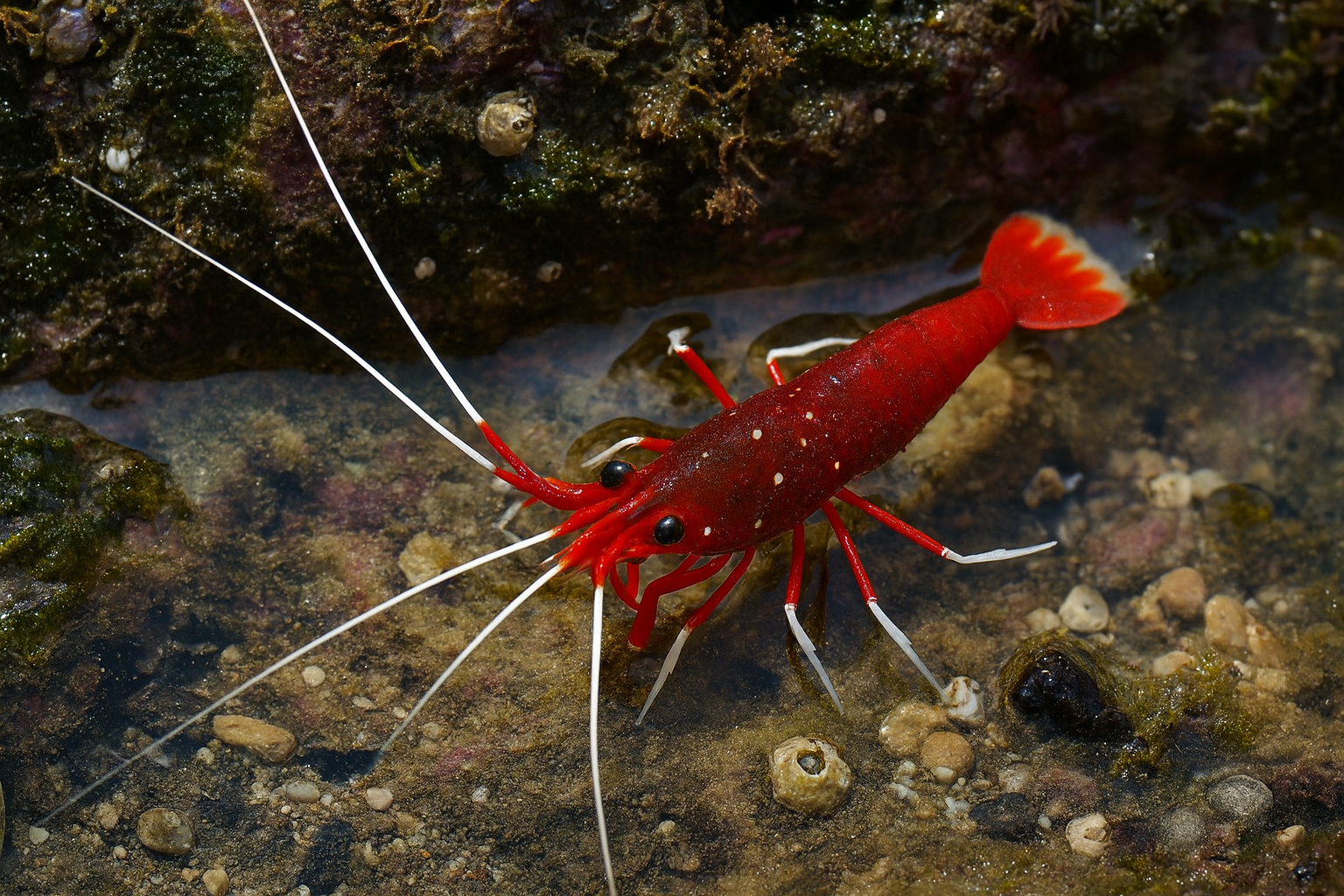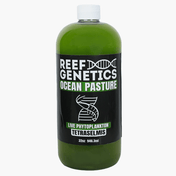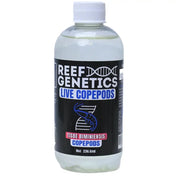Every reef tank has that one showpiece—the coral colony that steals the spotlight, or the fish that everyone asks about. For many nano tank hobbyists, that star is the Blood Red Fire Shrimp. With its deep crimson body and elegant white antennae, this shrimp looks like something out of a saltwater fairy tale.
But these little guys aren’t just for looks. They play a role in your tank’s ecosystem, too. If you’ve been wondering whether a fire shrimp deserves a spot in your setup, let’s dive into why they’re so popular and how to keep them happy.
What Makes a Fire Shrimp So Special?
The Blood Red Fire Shrimp (Lysmata debelius) is an ornamental shrimp native to the Indo-Pacific. It’s one of the most vibrant shrimp in the hobby—a solid, almost glowing red body with little white spots and those long white antennae that wave like streamers.
Here’s the cool part: they’re more than just eye candy. These shrimp are hardy, relatively low-maintenance, and they’ll even help clean up the tank. That’s a win-win for reef keepers.
Why Hobbyists Love Them
A Splash of Color You Can’t Ignore
Most reef tanks are filled with blues, greens, and earthy rock tones. Drop a Blood Red Fire Shrimp in there, and suddenly you’ve got a bold pop of color that demands attention. Under blue LED lighting, the red almost looks electric.
Many aquarists call them “the ruby of the reef” for a reason. They add depth and drama in a way few invertebrates can.
Part of the Clean-Up Crew
While they’re not as active as peppermint shrimp when it comes to cleaning, fire shrimp still pull their weight. They’ll eat leftover food and organic debris, which helps keep your water cleaner. Occasionally, they’ll even pick parasites off fish if the fish is willing.
No, they’re not a cure-all for tank problems, but they do contribute to overall health—and that’s always a plus.
Peaceful and Reef-Safe
One of the best things about this shrimp? It plays nice with others. Fire shrimp are safe with corals and most fish. They’re not going to nip at your prized acans or harass your clownfish.
They are a little shy, though. Expect them to hang out in shaded spots or under overhangs during the day. If you want to see them more often, feed them when the lights dim—they’re night owls.
Low-Maintenance Beauty
They look exotic, but they’re not delicate divas. As long as your water parameters are stable and you’ve got some hiding spots, they’ll do fine. They don’t need special lighting, high-end gear, or constant attention.
How to Care for Blood Red Fire Shrimp
Tank Size & Habitat
You don’t need a massive tank, but 20 gallons or more is ideal. Why? It gives them space to roam and reduces stress. These shrimp love having caves or crevices where they can hide, especially when they molt. Adding live rock isn’t just for aesthetics—it gives them places to feel secure.
Water Parameters
Consistency is your best friend here. Aim for:
- Temp: 72–78°F
- Salinity: 1.023–1.025
- pH: 8.1–8.4
- Nitrates: Under 20 ppm
Like most inverts, they’re sensitive to copper and harsh chemicals. If you treat your tank, always double-check the ingredients.
Diet: What Do They Eat?
Fire shrimp are opportunistic feeders. They’ll scavenge leftover fish food, but that’s not enough to keep them in peak condition. Give them a little love with:
- Frozen mysis or brine shrimp
- Chopped seafood (shrimp or clam bits work great)
- High-quality sinking pellets
A couple of feedings per week is plenty. Don’t overdo it—extra food means extra waste, which can spike your nitrates.
Lighting & Flow
They’re not fans of bright lights. In fact, they often hang out in dim spots. If your tank is a high-light setup for corals, make sure there are shaded areas for them. As for flow, moderate is perfect. Too much current, and they’ll struggle to stay put.
Behavior & Tankmates
Fire shrimp are generally chill, but they do have quirks. For one, they can be shy at first. Don’t be surprised if you only see their antennae poking out from behind a rock for the first week. Once they settle in, you’ll catch them exploring during low-light hours.
Tankmate rules are simple:
- Good with: Most reef-safe fish and corals
- Avoid: Aggressive species like large wrasses, triggers, or hawkfish—they see shrimp as snacks
-
Other shrimp? You can keep more than one in a big tank, but in small systems, they may fight over space.
What About Cleaning Fish?
You’ve probably seen videos of shrimp setting up cleaning stations for fish. Fire shrimp do this too—but not as often as cleaner shrimp species. Don’t expect them to hang out and groom tangs all day, but if a fish approaches them, they might offer a quick parasite pick-off.
Price & Buying Tips
Fire shrimp aren’t the cheapest inverts in the hobby. Expect to pay around $60-$70 each, depending on size and location. When shopping, look for:
-
Bright, even coloration
-
Intact antennae and legs
-
Active, alert behavior
Skip any that look dull, have missing limbs, or are lying still at the bottom.
Concluding Thoughts
Adding a Blood Red Fire Shrimp to your reef tank is like adding a splash of luxury. They’re bold, beautiful, and surprisingly easy to keep happy. Beyond the looks, they play a helpful role in your tank by eating leftover food and, occasionally, cleaning your fish.
If your aquarium needs that one piece to pull everything together, this might be it. Give them a safe home, keep your water stable, and enjoy watching this ruby-colored beauty explore your reef.



















